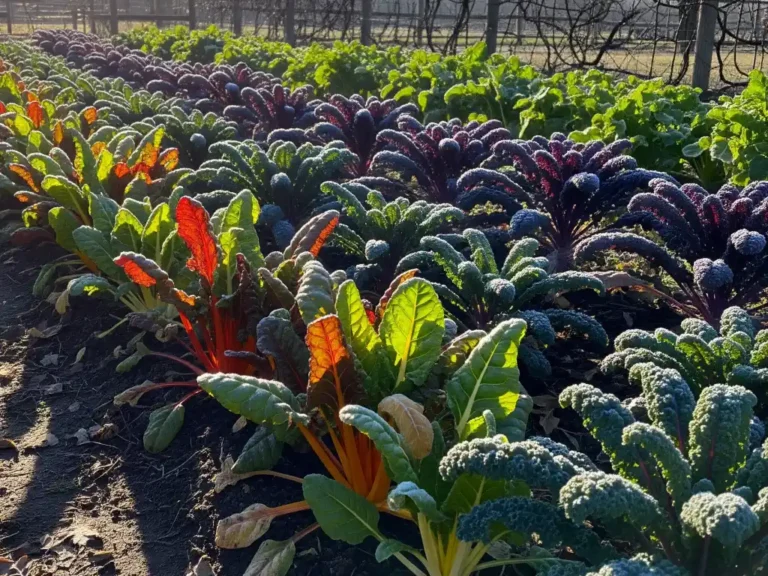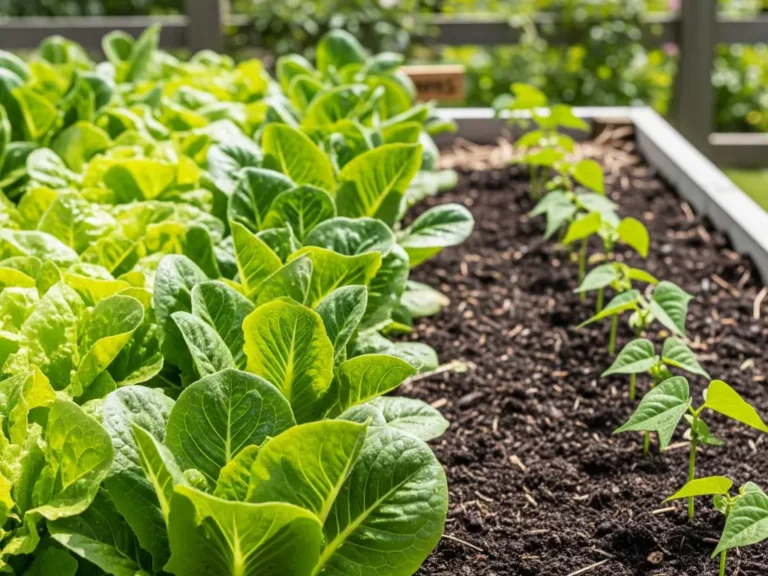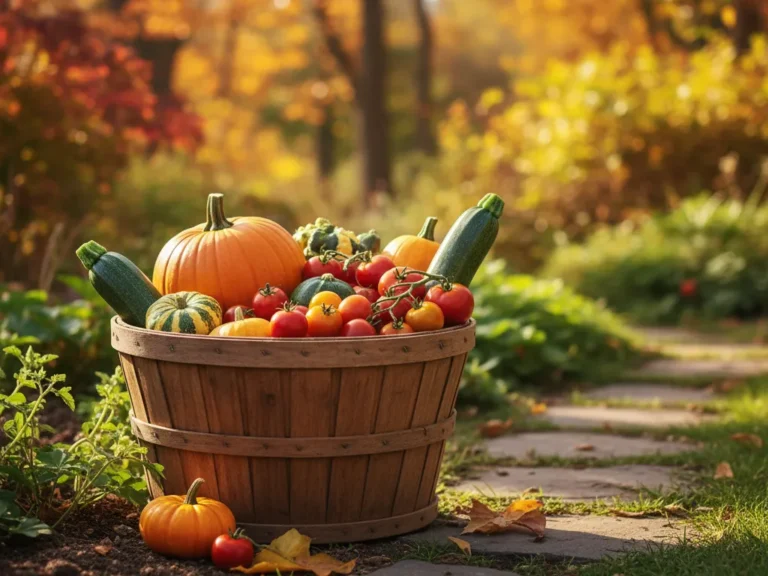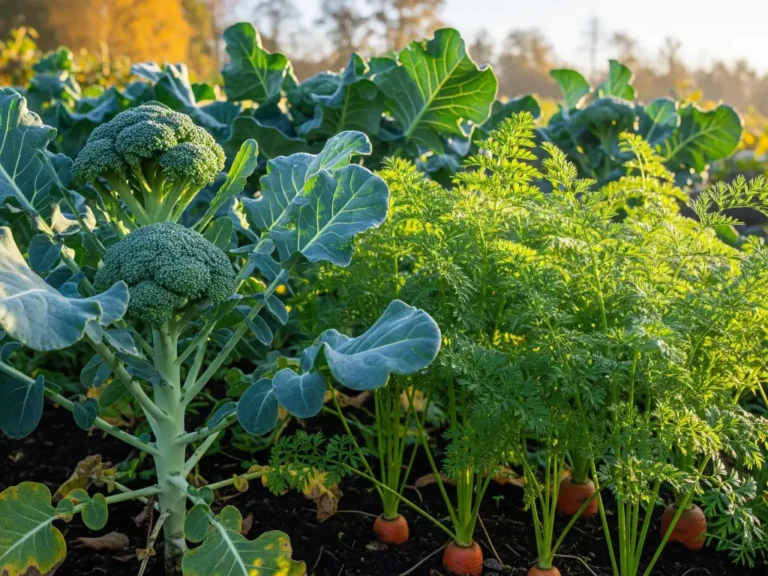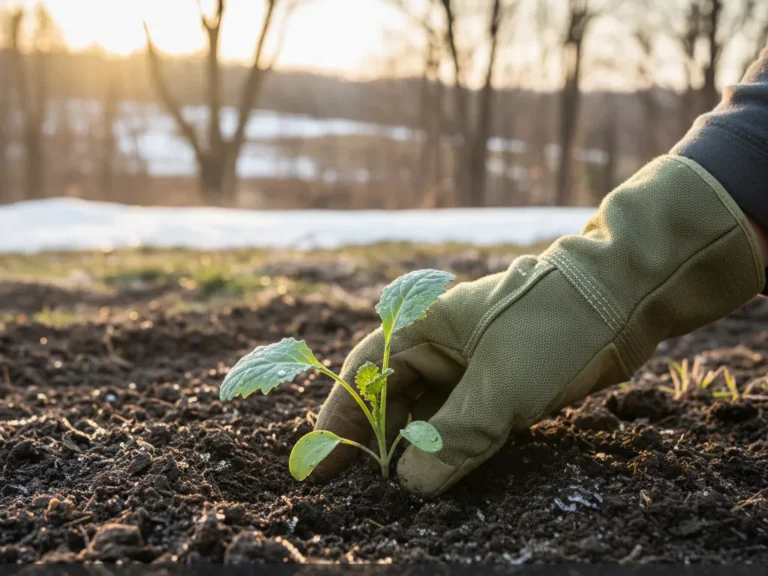With its mild winters and abundant sunshine, Zone 9 offers a near year-round gardening paradise. Here, the rare threat of frost is what separates a good harvest from a great one. This Zone 9 guide is built for this nuanced climate, providing two distinct timelines: an ‘Aggressive’ schedule for those who want to maximize every single week of the year, and a ‘Safe’ schedule that provides a simple guarantee against an unpredictable cold snap. Find the perfect dates for your gardening style below.
Understanding the Zone 9 Climate: A Year-Round Gardener’s Paradise
Welcome to one of the most rewarding gardening climates in North America. Zone 9 is defined by its long, hot summers and short, mild winters where the ground rarely freezes. This creates a gardener’s dream: a nearly 12-month growing season. The key to success in Zone 9 is to stop thinking in terms of a single “spring/summer” season and instead embrace the rhythm of its two distinct “mega-seasons.”
The Two “Mega-Seasons” of a Zone 9 Garden
- The Warm Season (Typically March through October): This is your traditional “summer” garden on a grand scale. It’s the time for all heat-loving plants to shine. Think of sprawling tomato vines, productive pepper plants, endless zucchini and squash, climbing beans, cucumbers, and melons. This is the season for classic, sun-ripened flavor.
- The Cool Season (Typically October through March): This is what makes Zone 9 truly special. While northern gardeners are putting their beds to rest for the winter, you are just getting started on a second, equally productive season. The mild, frost-free winter is the perfect time to grow an incredible variety of cool-weather crops, including most Leafy Greens (Lettuce, Spinach, Kale), Brassicas (Broccoli, Cabbage, Cauliflower), and Root Vegetables (Carrots, Beets, Radishes).
The Primary Challenge: Intense Summer Heat
The same abundant sunshine that ripens your tomatoes to perfection can be a major challenge. The intense heat and sun from June through August can stress plants, causing cool-season crops to “bolt” (go to seed prematurely) and even slowing production on some heat-lovers. Successful Zone 9 gardeners learn to work with the heat by:
- Providing afternoon shade for sensitive plants.
- Applying a thick layer of mulch to keep soil cool and retain moisture.
- Ensuring deep, consistent watering.
A Note on Zone 9a vs. 9b
You might see your area listed as Zone 9a or 9b. The difference is subtle but important: Zone 9b has a slightly warmer average minimum winter temperature than 9a. For most of the annual vegetables in my calendar, this difference is negligible. However, it can be the deciding factor for growing more sensitive perennial or subtropical plants, like certain citrus trees, which might thrive in 9b but require extra protection on the coldest nights in 9a.
Key Dates for Zone 9
Understanding the frost patterns in your area is fundamental to successful gardening. Here are the key baseline dates I use to create your planting calendar, offering both an early-start (“Aggressive”) and a safer approach:
Spring Planting Baselines
- Aggressive Spring Planting Baseline: Feb 28th
- Safe Spring Planting Baseline: Mar 18th
Fall Planting Baselines
- Aggressive Fall Planting Baseline: Nov 30th
- Safe Fall Planting Baseline: Nov 10th
Note: The “Aggressive” fall date is later because it aims to maximize the growing season, accepting a higher risk of an early frost.
The USDA Zone 9 Planting Calendar
This comprehensive calendar provides specific planting windows for a variety of common vegetables, taking into account both my Aggressive and Safe spring and fall planting baselines.
How to Use This Calendar
This calendar provides key planting dates for two gardening styles—Aggressive and Safe—to suit your tolerance for risk. The logic for spring and fall planting is different, so please read the descriptions below.
For Spring Planting:
- Safe: For gardeners who prefer a cautious approach. This means planting later to ensure minimal risk of frost damage to new seedlings from a late spring frost.
- Aggressive: For gardeners who want to get a head start. This involves planting earlier and being prepared to protect young plants from potential late frosts.
For Fall Planting:
Aggressive: For gardeners who want to maximize their harvest. This involves planting later to extend the growing season as long as possible, while being prepared to protect plants from an unexpected early frost.
Safe: For gardeners who prioritize a guaranteed harvest. This means planting earlier in the season to ensure crops are fully mature before the first frost of autumn arrives.
| Vegetable | Planting Method | Spring Planting (Aggressive) | Spring Planting (Safe) | Fall Planting (Aggressive) | Fall Planting (Safe) | Days to Harvest (days) | Notes |
| Radishes | Direct Sow Only | Jan 17 – Jan 31 | Feb 4 – Feb 18 | Oct 19 – Nov 2 | Sep 29 – Oct 13 | 21-35 | Cool-season crop; requires loose soil. For continuous harvest, sow every 1-2 weeks until weather warms. |
| Lettuce | Direct sow or start seeds indoors | Jan 31 – Feb 14 | Feb 18 – Mar 4 | Sep 21 – Oct 5 | Sep 1 – Sep 15 | 45−60 | For spring planting, you can direct sow on this date. To get a head start, start seeds indoors 3-4 weeks before this date for transplanting. |
| Bush Beans | Direct Sow Only | Mar 7 – Mar 14 | Mar 25 – Apr 1 | Aug 24 – Sep 7 | Aug 4 – Aug 18 | 50-60 | Warm-season crop; direct sow after frost. No support needed. |
| Zucchini | Direct Sow (recommended) | Mar 7 – Mar 14 | Mar 25 – Apr 1 | Sep 7 – Sep 21 | Aug 18 – Sep 1 | 45-60 | Dates are for direct sowing. For a head start in spring, start seeds indoors 2-4 weeks prior. |
| Tomatoes | Start indoors, then transplant | Mar 7 – Mar 14 | Mar 25 – Apr 1 | Aug 31 – Sep 15 | Aug 11 – Aug 26 | 50-90+ | Dates are for transplanting outdoors. Start seeds indoors 6-8 weeks prior. Fall planting requires short-season varieties. |
| Peas | Direct Sow Recommended (Can start indoors) | Jan 17 – Jan 31 | Feb 4 – Feb 18 | Sep 21 – Oct 5 | Sep 1 – Sep 15 | 55-70 | Frost-hardy: plant early & provide a trellis. Harvest daily to maximize yield before summer heat ends the season. |
| Spinach | Direct Sow (recommended) | Jan 17 – Jan 31 | Feb 4 – Feb 18 | Oct 5 – Oct 19 | Sep 15 – Sep 29 | 40-60 | Very cold-hardy; plant early. Keep soil moist to prevent bitterness. Harvest outer leaves for a continuous supply before summer heat arrives. |
| Kale | Direct sow or start seeds indoors | Jan 31 – Feb 14 | Feb 18 – Mar 4 | Sep 1 – Oct 1 | Aug 12 – Sep 11 | 55-75 | Very cold-hardy. Frost improves flavor, making fall harvests sweeter. Harvest outer leaves to allow the plant to keep producing. |
| Basil | Start Indoors or Direct Sow | Mar 7 – Mar 14 | Mar 25 – Apr 1 | Sep 7 – Sep 21 | Aug 18 – Sep 1 | 60-75 | Spring date is for transplanting; start seeds indoors 6-8 weeks prior. Fall date is for direct sowing. |
| Mint | Transplants or Cuttings | Feb 14 – Feb 28 | Mar 4 – Mar 18 | Oct 5 – Oct 19 | Sep 15 – Sep 29 | 30-40 | Dates are for transplants (not seed). Harvest continuously once established. |
| Garlic | Direct Sow Only | Jan 3 – Jan 31 | Jan 21 – Feb 18 | Oct 19 – Nov 2 | Sep 29 – Oct 13 | ~240 | Plant from cloves; harvest time shown is for fall planting. Fall planting recommended for largest bulbs. Choose Softneck varieties for mild winters. Spring planting yields smaller, often undivided bulbs. Zone 9 / very mild winters: Refrigerate cloves 6-8 weeks before planting. |
| Potatoes | Plant Seed Potatoes | Jan 17 – Jan 31 | Feb 4 – Feb 18 | Aug 10 – Aug 24 | Jul 21 – Aug 4 | 65-90+ | Two windows: spring (harvest before peak heat) & fall (often more productive). Fall planting requires sowing in late summer heat, so using mulch to keep soil cool is essential. |
| Onions | Transplants (Recommended) or Sets | Dec 20 – Jan 31 | Jan 7 – Feb 18 | Sep 21 – Oct 5 | Sep 1 – Sep 15 | 85-100 | Short-Day varieties only.Spring dates refer to planting transplants in late winter. Fall dates are for direct seeding to overwinter for an early summer harvest. |
✔ Accuracy is my priority. The key planting dates in this calendar are calculated based on representative Aggressive and Safe frost date baselines established for each zone. Because your garden’s microclimate may vary, I strongly recommend that you verify your local frost dates for the most accurate timing. Learn My Methodology & Find a Frost Date Tool Here.
The Rhythm of the Zone 9 Garden: A Seasonal Overview
Gardening in Zone 9 isn’t a sprint; it’s a year-round marathon with four distinct stages. Understanding this natural rhythm is the key to maximizing your harvest and working with your climate, not against it. Forget the traditional four seasons; a Zone 9 gardener lives by a different clock. Here’s what your gardening year will feel like.
Fall Planting: The “Second Spring”
For experienced Zone 9 gardeners, fall is often considered the true start of the main growing season. The soil is still warm from the summer sun, allowing for rapid germination of cool-weather seeds, while the gradually cooling air is exactly what these plants crave. This is the critical window to plant the crops that will form the backbone of your winter and spring harvest, including:
- Brassicas: Broccoli, Cauliflower, Kale, Cabbage, Brussels Sprouts
- Leafy Greens: Lettuce, Spinach, Swiss Chard, Arugula
- Root Vegetables: Carrots, Beets, Radishes, Turnips
- Alliums: Garlic, Onions, Leeks, Shallots
Winter Gardening: The Green Harvest Season
Forget snow and frozen ground. Winter in Zone 9 (December through February) is the peak season for harvesting an incredible variety of fresh, vibrant greens. This is the reward for your fall planting efforts.
While gardeners in colder zones are browsing seed catalogs, you can be outside harvesting crisp lettuce for salads, tender kale for soups, and perfect heads of broccoli. The flavor of many of these plants, especially kale and carrots, is often enhanced and sweetened by the mild chill. Your main jobs during this season are simple: harvesting regularly and keeping an eye on the forecast for the rare, light frost.
Spring Planting: The Race Before the Heat
Spring in Zone 9 is a busy, transitional time. It’s a race to get your heat-loving summer crops in the ground while enjoying the final harvest of your winter treasures. As temperatures rise, your cool-season greens will begin to “bolt” (flower and turn bitter), signaling that their time is up.
This is the prime time to plant all your classic summer vegetables, giving them a head start before the intense summer heat arrives:
- Tomatoes, Peppers, and Eggplant
- Squash, Zucchini, and Cucumbers
- Beans, Corn, and Melons
Surviving the Summer: Managing Heat, Pests, and Water
While your tomatoes and peppers are in their glory, the peak of a Zone 9 summer (typically July and August) can be the most challenging period for the garden as a whole. Your primary job shifts from planting to “life support” for your established plants.
Success during this season is all about management. Deep and consistent watering in the early morning becomes non-negotiable. A thick 3-4 inch layer of mulch is your best friend for keeping soil cool and retaining moisture. Providing afternoon shade with shade cloth can prevent sun-scald on sensitive fruits, and pest pressure from insects is at its highest, so daily observation is key.
Top 10 Recommended Vegetables for a Thriving Zone 9 Garden
While Zone 9’s long growing season allows you to experiment with a huge variety of plants, some vegetables are practically tailor-made for this climate. Starting with these reliable “all-stars” is the surest path to a successful and productive garden. Here are ten of my top recommendations, divided by the season in which they truly shine.
Warm-Season All-Stars
- Tomatoes: Zone 9’s long, hot summer is the perfect engine to power tomato growth, leading to large, flavorful fruit that can often be harvested well into the fall.
- Peppers (Sweet & Hot): Like their cousins, the tomatoes, peppers thrive on heat. The extended warmth of Zone 9 allows for multiple flushes of fruit, ensuring a continuous supply all summer.
- Explore the Complete Pepper Growing Guide →
- Zucchini & Summer Squash: These fast-growing plants are powerhouses of production in the summer heat. For a beginner, the speed and sheer volume of a zucchini harvest is an incredible confidence booster.
- Bush Beans: Many bean varieties are wonderfully heat-tolerant and produce prolifically through the summer months. Bush beans are especially easy for beginners.
- Eggplant: A true heat-worshipper, eggplant can be challenging in cooler northern climates but is a reliable and delicious star performer in a Zone 9 garden.
- Explore the Complete Eggplant Growing Guide →
Cool-Season Champions
- Lettuce: The ability to grow crisp, fresh lettuce all winter long is a unique privilege of gardening in Zone 9. It thrives in the mild, sunny days when other gardens are dormant.
- Kale: This nutritional powerhouse is not only tolerant of a light frost, but its flavor and sweetness are actually improved by the chill. You can harvest leaves from a single plant from fall all the way through spring.
- Carrots: While they can be planted at other times, carrots grown in the cool soil of a Zone 9 winter develop an incredible sweetness that is impossible to replicate in the summer heat.
- Explore the Complete Carrot Growing Guide →
- Broccoli: Planting broccoli in the fall allows it to mature during the cool, stable temperatures of winter. This prevents the premature flowering (“bolting”) that can often ruin a spring-planted crop in warmer climates.
- Explore the Complete Broccoli Growing Guide →
- Garlic: Zone 9’s mild winter provides the perfect amount of chill (vernalization) for Softneck garlic varieties. They are perfectly adapted for this climate and will produce large, easy-to-store bulbs the following summer.
Zone 9 Gardening: Unique Challenges & Tips
While Zone 9 is a paradise for year-round growing, it comes with its own unique set of challenges. Unlike colder climates where the garden gets a long winter rest, your garden is almost always active—which means problems can arise at any time of year. Mastering these three key areas will turn you into a truly successful Zone 9 gardener.
Managing the Intense Summer Heat
The same sun that ripens your tomatoes to perfection can be punishing from June through August. Protecting your plants from heat stress is your number one summer job.
- Mulch, Mulch, Mulch: A thick (3-4 inch) layer of light-colored mulch, like straw or shredded leaves, is non-negotiable. It acts like a blanket, keeping the soil cool and dramatically reducing water evaporation.
- Provide Afternoon Shade: The afternoon sun is the most intense. Using a “shade cloth” (a special fabric that blocks a percentage of sunlight) draped over hoops or a simple frame can be the difference between life and death for plants like peppers and even some heat-stressed tomatoes.
- Choose Heat-Tolerant Varieties: When buying seeds, look for varieties described as “heat-tolerant” or “slow-bolt.” Many seed companies have developed specific strains that perform better in long, hot summers.
Watering Strategies for a Year-Round Garden
With a 12-month growing season and long, dry spells, efficient watering is critical.
- Water Deeply, Not Daily: It’s far better to water your garden deeply once or twice a week than to give it a light sprinkle every day. Deep watering encourages plants to develop deep, resilient root systems that can better withstand heat and drought.
- Water in the Morning: Watering in the early morning ensures the water soaks into the soil before the sun can evaporate it. It also allows plant leaves to dry completely by midday, which helps prevent common fungal diseases.
- Consider Drip Irrigation: For a Zone 9 garden, investing in a simple drip irrigation or soaker hose system is a game-changer. It delivers water directly to the soil at the base of the plants, eliminating evaporation and saving a tremendous amount of water over the long season.
Common Pests in a Mild Climate
One of the downsides of a mild winter with no hard freeze is that many garden pests don’t die off. Pest pressure can be a year-round issue, making observation and early intervention key.
- The Aphid & Spider Mite Battle: These tiny sucking insects thrive in warm weather. You’ll often find them on new growth or the undersides of leaves. An early blast of water from the hose or a treatment with insecticidal soap is the best first line of defense.
- The Dreaded Squash Vine Borer: If you are growing zucchini or squash, this pest is a major threat in Zone 9. It’s a moth that lays its eggs at the base of the plant, and its larvae bore into the stem, killing the plant from the inside out. Proactive measures, like wrapping the base of the stem in foil, are often the best defense.
- Prevention is Key: The best strategy is to walk through your garden daily. Look under leaves and check the base of stems. Catching a pest problem when it’s just one or two bugs is infinitely easier than fighting an infestation.
The Science Behind My Calendars
My calendars are built upon a rigorous, data-driven process. By analyzing historical frost data for several populous and representative cities within each USDA zone, I establish both an average and a conservative “safe” frost date. This ensures the planting windows you see here are both accurate and reliable.
To see the full list of cities and data points used in my research, please visit the My Research Data page. For a complete explanation of the calculation process, you can read about My Methodology.
Your Next Step: Learn How to Grow
Now that you know when to plant in Zone 9, the next step is learning how to grow each vegetable from seed to a successful harvest.
My complete guides provide detailed, step-by-step instructions for everything you’ll need. Explore the full library to turn this calendar into a thriving, productive garden.

